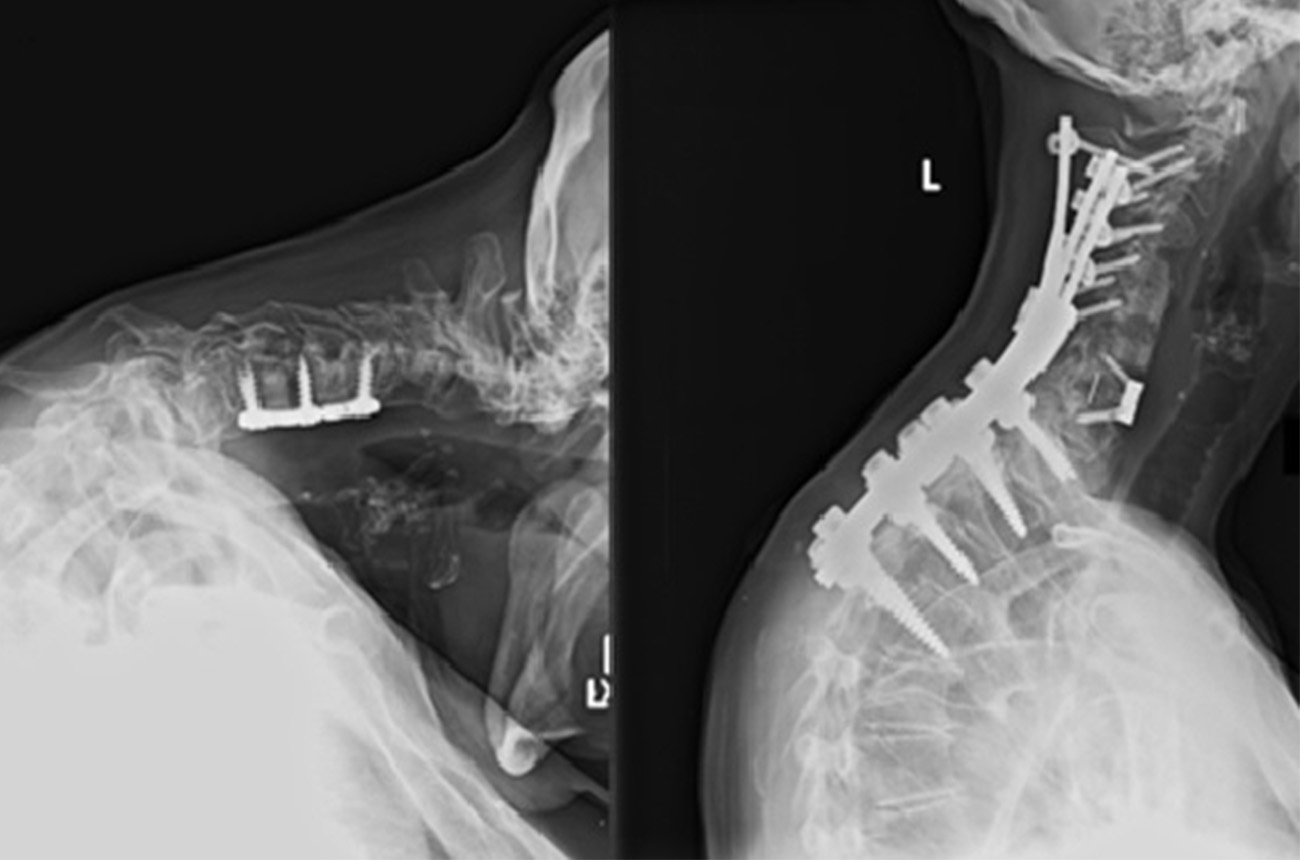Spinal Cervical Deformity

What is a spinal cervical deformity?
Call 314-362-3577 for Patient Appointments
Deformity of the cervical spine typically results in an abnormal position of the head relative to the chest and shoulders. While this is usually cosmetically bothersome to a person, cervical deformity can also result in difficulty swallowing and breathing, and can severely disrupt the person’s ability to perform normal tasks such as driving, eating and reading.
The most common causes of cervical deformity are:
- Degenerative – progressive collapse of the intervertebral discs and/or vertebrae
- Post-traumatic – resulting from injury
- Inflammatory – due to certain inflammatory conditions such as ankylosing spondylitis
Cervical deformities are categorized in two primary ways:
- Fixed — meaning that the deformity is rigid regardless of patient position
- Reducible — meaning that the deformity is flexible.
Why rely on Washington University experts to treat your spinal cervical deformity?
It is critical to seek the expertise of an experienced surgeon as this procedure can have substantial risks. Washington University spinal neurosurgeons have extensive experience in these procedures. In fact, other spine surgeons in the region frequently refer patients with cervical deformities to our team of specialists.
How do we treat cervical deformity?
Treatment of cervical deformity depends on the severity of the deformity and the health of the patient. Depending on the nature of the deformity, the surgeon will frequently need to fuse multiple bones in the neck together to improve the overall alignment of the head. It is critical to seek the expertise of an experienced surgeon as this procedure can have substantial risks. Washington University spinal neurosurgeons have extensive experience in these procedures. In fact, other spine surgeons in the region frequently refer patients with cervical deformities to our team of specialists.